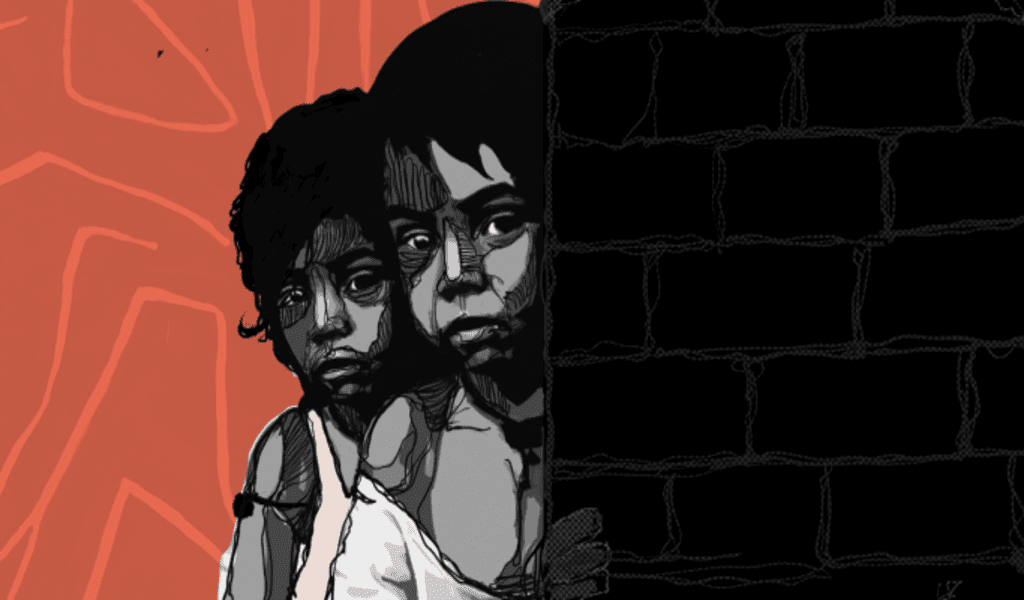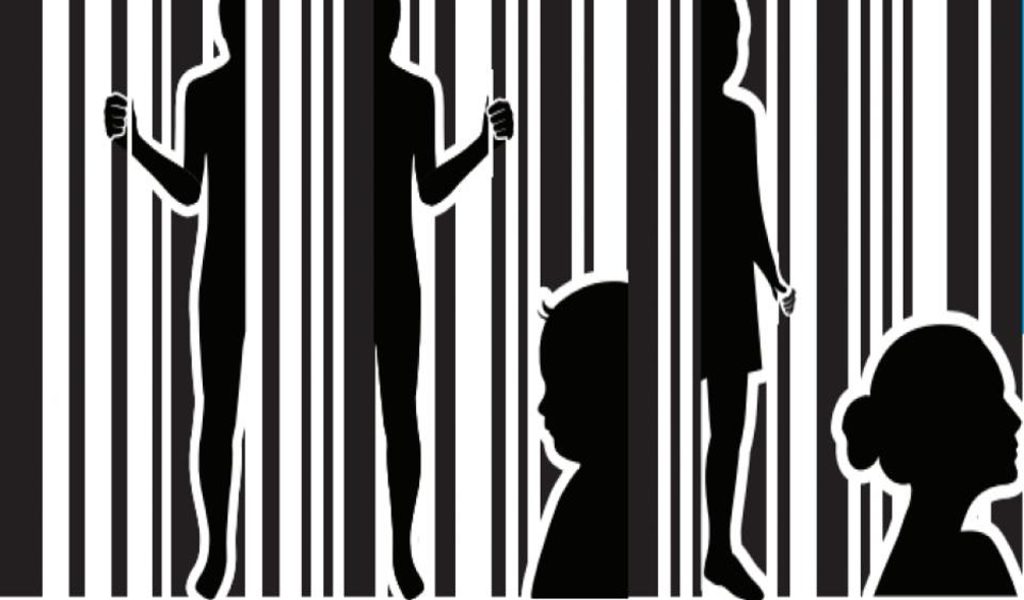
What we do see is that the child trafficking is becoming an income revenue stream for organized crimes, for gangs. It is not a horror safely confined to the past, it continues to exist throughout the world, even in developed and under developing countries, across the globe slaves labor and sweat, beaten and thrashed to enormous pains, they build and suffer.
Background
Every country in this globe is affected by human trafficking and slavery whether belonging from the same origin, transit, or destination, and commonly all three. With the globalization of society, it has become an organized crime for exploitation of human beings, vulnerable people leading to servitude and is prevalent in both national and transnational states and is recognized as one the most serious human rights violation across the globe. Child trafficking has become the part and parcel of human trafficking for accomplishing illicit and clandestine purposes, exploiters tend to seduce, bring pain to them and to their families at large. They are both the cause and consequence of human trafficking. “It ought to concern every person because it is at the basement of our common humanity. It ought to concern every community because it tears at our social fabric.”
The role of government to legislate stricter laws, executives to abide by their duties, lack of resources to private institutions to carry forward their roles and responsibilities is lacking and adoptive agencies that may be the reason for child trafficking. It has become a notable trade that is increasing rapidly due to extreme poverty, illiteracy, inability to access resources which are some of the causes of increased crime in child trafficking, because of which the traffickers face physical and mental stress and unable to adapt to the environmental setting. It has been observed from the past decades, the issue of child trafficking has gained more prominence and addressed as a social problem. Health and safety standards of the marginalized people of the society are more that may be the reason for child trafficking and there is a large volume of victims of such traffickers.
Introduction
Child Trafficking can be simply defined as a malafide act of recruitment, harboring, transferring, transporting the child below the age of 18 years who are kidnapped (the victim of abduction) from their respective homes and society by means of abuse of power, threat, and other means of coercion, fraud, and deception or in the lure of the position of their vulnerability, are been traded in the illegal market without their lawful consent for illicit purposes.
The word “trafficking” means dealing in something which is usually unlawful and illegal. India is one such country that has signed and ratified the UN Protocol to Prevent, Suppress and Punish Trafficking in Persons, Especially Women and Children, 2000 under the UN Convention against Transnational Organized Crime (UNTOC).” There is a need to address and fulfill the gap between child welfare and child exploitation which the child welfare professionals need to resolve the dilemma among the masses.
The causes of child trafficking may vary from situation to situation and are generally complex, but widely include poverty, lack of opportunities, economic gains to be made through the exploitation of children, entrenched gender discrimination, and discriminatory cultural practices followed from decades. There are numerous examples to cite such as, prostitutes, male order brides, beggars, child soldiers, and forced laborers in homes, on plantations and in mines, etc. Increasingly, they are being recruited to aid and advance in the manufacture and selling of drugs and weapons, working in factories manufacturing and producing illegal objects and things.
Victims who are susceptible and likely to be trafficked are those who are subject to pervasive discrimination, including minorities, stateless children, refugees, and girls. A report produced by the United Nations Population Fund provides the following assessment: women and girls are, generally, less valued they are more often seen and used as commodities they are easy targets for traffickers to trade them in illegal market for sex trafficking, prostitute, commercial sex acts which result into force, threat and coercion.
Where children lack stable home surroundings and security, where the opportunities and jobs available to them are less in number, trafficking tends to flourish. The rates of trafficking are high in areas where there are minimal job possibilities; where children have limited education or no education and vocational skills; and where children are living without the security of parents or primary caregivers (including in orphanages). Porous borders, outskirts buildings of huts, and basic place of residence, and the presence of natural calamities further enhance vulnerability to trafficking, as does forced migration. Children without birth registration or whose identity is not claimed, also face a heightened risk of trafficking. Victims of trafficking are generally exposed to physical and sexual abuse, dangerous work environments, forced labor, and denied access to primary education.
Child Trafficking in India

There is no statistical data on child trafficking in all its forms in India. We also know that child trafficking in India can serve a myriad of purposes such as sexual exploitation, domestic labor, agricultural labor, exploitative work in the factories, industries, forced marriage, adoption, and even organ harvesting. A study in the state of Andhra Pradesh disclosed that 15 percent of the trafficked victims had been forced into prostitution before the age of fourteen, 25 percent between the ages of fourteen and sixteen, and 20 percent when they were sixteen to eighteen years old. The demand made for sexual exploitation often leads to child trafficking.
A cultural system that has been exploited by traffickers is the Devadasi system, which is a halidom of medieval times. Devadasi, a term with a literal meaning “servant of God,” refers to the practice among certain communities which follow ancient customs in India in which families dedicate their daughters to the service of the temple deity. These girls, devadasis who are dedicated to the goddess when they are of very tender age or adolescent are considered to be married to the goddess who is seldom sold and trafficked into prostitution. Trafficking women and girls for coerced and forced marriages is an additional form of sexual exploitation. The shortage of girls that is the result of a long-standing practice of female feticide and infanticide in various states following ancient customs and practices has led to a demand for brides bought from other states.
The trafficking of children to the factories of firecrackers, toy making, jewelry/ornaments, carpet making is a classic example of child trafficking for labor exploitation. They work in the plantation, fishing, brassware, and fireworks industries and factories. They are involved in the production and manufacturing of silk, silver, and gold jewelry, locks, bidis, incense sticks, and ceramics. They are coerced to manufacture matches and glass, to polish gems, to work in ceramics and embroidery factories, and to produce textiles and woolen garments. Some sectors of the market that recruit child labor under extremely exploitative situations but are not identified as hazardous work are tea stalls, roadside restaurants, small hotels, shops, and waste-recycling dealers leading them to work constantly for more than normal working hours.
Protection against Trafficking – Legal and Constitutional Framework
Art 23(1) of our Indian Constitution specifically prohibits trafficking in human beings. Art 24 specifically talks about the prohibition of forced labor and its incidental forms which involves the employment of children in factories and industries involving hazardous activities under the age of 14. These types of offenses are also covered under the Indian Penal code and Immoral Traffic Prevention Act, 1956 and provides for stringent punishment. “Anyone who sells or disposes of a minor under the age of eighteen for prostitution is subject to up to ten years of imprisonment and a fine” (IPC Section 372). Similarly, under Section 373 “anyone who buys, hires, or obtains possession of a minor in any other way for the purpose of prostitution commits a crime punishable by a fine and a prison sentence of up to ten years”.
Moreover, the Indian Penal Code under section 374 punishes those who compel a person to labor against his or her will to imprisonment for up to one year, payment of a fine, or both. The Immoral Traffic Prevention Act which is special legislation embodies various provisions which deal exclusively with trafficking. It punishes an offender who coerces or induces a girl into prostitution with a sentence of imprisonment for three to seven years and the assessment of a fine (Section 5). Under section 6 whoever with the intention of detaining a girl in a brothel is punished by imprisonment for seven years to life.
Thus, although trafficking is prohibited in the grundnorm of the legal system by the constitution, India has tried to address and mitigate the problem by enacting a large number of laws on different aspects of trafficking instead of creating a single comprehensive body of legislation that will provide offenders with stringent punishments on different segments of offenses with evolving crime. There are two major drawbacks to this system. Firstly, there is no common legal definition of trafficking, which creates a loophole for traffickers, who argue that their offense does not constitute trafficking. Secondly, due to the overlapping jurisdiction between some of the laws, traffickers are likely to receive the lightest possible sentence because of the overlapping jurisdiction and subjective application of the multiple laws that may apply.
Conclusion
Post-independence many legislations have been enacted which provide remedies and relief to the victims of child trafficking and also provides for strict penalties and punishments to the offenders of such activities. Despite the enactment of specific legislation and judicial intervention, there has been a massive surge in the cases of child trafficking. To make a significant impact upon the problem we need to address the causes rather than working upon the symptoms. We need to work upon the reasons which involve the victims in such detrimental activities, we need to address the issues of stark poverty and other causes which involve the vulnerability of such children.
Lakhs of people surviving in India are unable to foster themselves with the basic amenities and requirements such people tend to live below the poverty line. In order to eradicate such heinous offenses, we need to eradicate the root cause which leads to such action, the government needs to create job opportunities under various schemes and policies drafted by them. Thus, to create a bandwidth of such protective networks which shall act as a safeguard and secure the lives of thousands of people who are at stake due to their vulnerability. It is not only the duty of governments, social organizations, and NGOs to uplift and protect them but a duty of every community and a common man to work in unity at an individual level to eradicate such problems which are likely to affect the marginalized people of the society. Together we can, we will win!